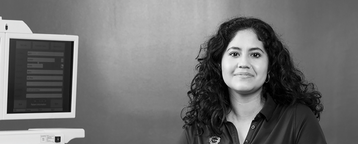Seven ways to help control runaway health insurance benefit costs

In an effort to help control huge increases in health insurance renewal premiums, you have probably considered many of the obvious approaches, including reducing the employer contribution. While that certainly is an option, it can have negative impacts on employee morale and attrition rates, making hiring new talent more challenging. So, what are some other approaches?
1. Choose the optimal coverage
Everything about health care in the U.S. is complicated, and choosing the optimal insurance coverage is no different. It’s not hard to be either underinsured or overinsured and both can increase employer contributions at renewal times. In 2022, approximately 48.7% of Americans received health insurance through their employers.1 Since work-based coverage is a significant source of health insurance for people in the United States, employers have a huge stake in helping people obtain optimal coverage for both the employees’ and your company’s health and bottom lines. In 2022, the most recent data available, 23% of working-age adults were inadequately insured,2 meaning they had health insurance all year, but their coverage didn’t provide them with affordable access to health care.

The commonwealth fund defines “underinsured” as people who are insured all year but don’t have affordable access to health care.3 that means at least one of the following statements may apply:
• Out-of-pocket costs over the prior 12 months, excluding premiums, were equal to 10 percent or more of household income.
• Out-of-pocket costs over the prior 12 months, excluding premiums, were equal to 5 percent or more of household income for individuals living under 200 percent of the federal poverty level ($27,180 for an individual or $55,500 for a family of four in 2022). The deductible constituted 5 percent or more of household income.
Being underinsured can occur when a person’s health insurance doesn’t adequately cover their healthcare needs. This can happen due to high deductibles or other out-of-pocket costs. What often happens at renewal is underinsured employees select “better” or more expensive coverage plans. From the employer’s point of view, this is extremely difficult to predict, and when many employees do this, it can have a significant impact on your employer benefits costs. On the other end of the spectrum, when people have premium health coverage, they tend to be less concerned about the cost of medical services. As a result, they might seek unnecessary or excessive care since they don’t bear the full financial burden. This “over-consumption” of healthcare can potentially cause the insurance carrier to dramatically increase rates at renewal.
In between are “best” health coverage options for someone and their family, and that depends on individual circumstances, such as budget, preferred doctors, and healthcare needs, as well as plan details, deductibles, copayments, and coinsurance. Selecting coverage in this sweet spot between being underinsured and overinsured is complicated and often overwhelming for even the most informed employees. Offering easy-to-use benefits decision support tools that help employees compare plans, estimate costs, and understand coverage details can help simplify the decision-making process and empower employees to make informed choices.
For employers, providing the best set of plan options to cover the widely varied needs of employees can be equally complicated and overwhelming. This is why working with a benefits specialist is so important. A benefits specialist can help employers build the best set of plan options for employees, while providing sophisticated benefits decision support tools for employees to select the best plan for them and their dependents.

2. Offer high deductible health plans (hdhp)
HDHPs typically have lower monthly costs compared to traditional health insurance plans. HDHPs can be a good fit for, healthier individuals or those who rarely need medical services.
HDHPs encourage cost-conscious behavior by requiring higher deductibles and can be a good choice for people who actively manage their healthcare spending and seek out cost-effective services.
While HDHPs offer lower monthly cost for coverage, they may expose employees to significant out-of-pocket expenses in the case of a major medical incident. An excellent way to help mitigate this is to offer health
savings accounts (HSAs) along with HDHPs.
Employees and employers benefit from lower HDHP lower monthly costs, and employees can use HSAs to pay for qualifying healthcare expenses. HSA balances roll over from year to year, travel with the HSA owner when changing employment, and never expire. Therefore, they can provide a valuable safety net for unexpected healthcare costs. Because they share many of the tax-advantaged benefits and rules, HSAs are often described as a retirement savings plan for health care once you hit 65 years of age.
According to the federal reserve’s 2022 economic well-being of u.s. households survey, approximately 37% of americans lack enough money to cover a $400 emergency expense, such as an unexpected medical bill. this figure has increased from 32% in 2021.
In other words, nearly one in four consumers would need to resort to credit, family assistance, asset sales, or loans to handle such a significant unexpected cost. 4
In the united states, approximately 37% of employees have medical debt, and 32% struggle to pay their medical bills.5
Employees with high medical debt can be costly to your organization. In fact, 78% of employees with high financial stress say it distracts them from work.6
3. Implement health and wellness programs
Wellness programs can positively impact both employee health and insurance costs. By encouraging healthier behaviors, these programs can help lead to lower health care costs overall, and in return, may lower insurance costs.
Employees who participate in wellness programs tend to have fewer medical conditions and utilize health insurance benefits less frequently. According to a Zippia study, the average employee wellness program return on investment (ROI) is six-to-one, and 72% of employers saw a reduction in healthcare costs after implementing a wellness program.7
These don’t have to be complicated or expensive to provide, and can include:
- Wellness newsletters, tips and education
- Weight management programs, nutrition counseling and healthy snack options in the break room
- Walk-and-talk meetings or friendly step challenges
- Stress management workshops
- Installing bike racks to encourage biking to work
- Tobacco cessation programs
1. ehealthinsurance.com/resources/small-business/how-many-americans-get-health-insurance-from-their-employer
2. commonwealthfund.org/publications/issue-briefs/2022/sep/state-us-health-insurance-2022-biennial-survey
3. Ibid
4. https://fortune.com/2023/05/23/inflation-economy-consumer-finances-americans-cant-cover-emergency-expense-federal-reserve/
5. https://jdigroup.com/medical-debts-impact-on-employees-and-how-employers-can-help/
6. https://finhealthnetwork.org/research/the-case-for-employers-to-invest-in-employee-financial-health/
7. https://www.zippia.com/advice/employee-wellness-statistics/
4. Focus on preventive care
Access to preventative care can help improve health outcomes and decrease the overall cost of care.8 Yet the U.S. spends only 2.9% of overall healthcare dollars on preventative care.9
Prioritizing preventive care can help delay or avoid the onset of serious health conditions. Detecting diseases early helps to reduce the need for expensive treatments,10 surgeries, and medications, which can help to reduce costs11 and help control future health expense increases for both employee and employer. And because regular screenings and early detection contribute to better overall health,12 preventive care can help reduce the number of sick days and absenteeism, positively impacting workplace productivity.13
Investing in preventative care benefits demonstrates an employer’s commitment to employee well-being, fosters a positive culture, and contributes to overall health equity. It’s a win-win situation14 for both employers and their workforce.
8. https://ncbi.nlm.nih.gov/pmc/articles/PMC3820521/
9. https://www.healthsystemtracker.org/
10. https://www.wellright.com/resources/blog/importance-preventive-care-employee-well-being
11. https://www.onemedical.com/business/resource-center/how_can_employers_drive_employee_engagement_through_preventive_care/
12. http://wellright.com/resources/blog/importance-preventive-care-employee-well-being
13. https://www.onemedical.com/business/resource-center/how_can_employers_drive_employee_engagement_through_preventive_care/
14. hbr.org/2023/01/employers-can-do-more-to-advance-health-equity


5. Create benefits awarness
A potential bigger driver toward cost reduction is benefits education and creating awareness around the plans or programs employees already have as part of their medical coverage (such as, telehealth, mental health services, cost estimators) or wellness and other programs.
More informed healthcare consumers make smarter choices that can lead to cost savings for both the employer and employee. This goes hand in hand with understanding the benefits of preventive care and helping to circumvent disease progression that can lead to higher costs.
Examples:
- When an employee is aware that they have telehealth options, they are more likely to use that for non-urgent care instead of using urgent care or the ER, thus potentially reducing costs.
- When an employee is engaged with their health insurance carrier portal and registers or downloads their carrier mobile app, they can get preventive care reminders urging them to get important screenings.
- Encouraging employees to download their carrier mobile app as the gateway to all their available health coverage information and programs also provides ways to search for in-network providers, quickly access available telemedicine services, find a lower cost facility for an MRI, and find more cost-saving tips.
All this benefits education and awareness leads to smarter choices and adds up in the way of the cost savings you may not otherwise see.
PRO TIP
Rather than focusing just on health care costs, optimizing the entire benefits area as part of HR administration can help lead to greater savings.
6. Leverage tax credit
Small businesses with 25 or fewer full-time employees that meet certain criteria may qualify for the Small Business Health Care Tax Credit. This federal subsidy can help reduce your cost for providing health insurance by up to 50%. Additionally, health insurance, like employer contributions to retirement plans, are viewed as tax-free compensation and are exempt from Social Security and Medicare (FICA) tax.16
16. https://www.irs.gov/
“ We love TriNet; the ease of use, self-service options, expertise and responsiveness; the access to benefits is incredible and the benefits flex to meet our company’s needs.”
Chief Financial Officer LifeLabs Learning, Dana Price
Consider a PEO
Working with a professional employer organization (PEO) like TriNet can help you lower health care costs. In a NAPEO study,17 63% of PEO clients said these health benefits costs were lower with their PEO.
And while health care rates are set by the chosen carrier, PEOs can provide access to big company benefits at more cost-effective prices. Based on a TriNet survey performed in 2024, 86% of surveyed TriNet customers agree that after moving to TriNet, their organization was able to offer access to benefits that help attract talent into their organization.18 This can be particularly valuable when you are competing against larger employers that can provide health benefits you wouldn’t otherwise be able to offer.
PEOs can also help you navigate the ever-changing myriads of HR and benefits compliance, like the Affordable Care Act, workers’ compensation, Employee Retirement Income Security Act (ERISA), and more.
Perhaps even more significant are the savings PEOs can offer through health benefit administration, and HR administration in general. In fact, according to NAPEO, the general use of a PEO annual return on investment (cost savings alone) is 27.2%.19 And of the 160 surveyed TriNet customers, 98% reported considerable or moderate time savings working with TriNet. TechValidate survey.20
17 napeo.org. Your results may vary
18 A 2024 TechValidate survey of 177 users of TriNet. Your results may vary
19 napeo.org Your results may vary
20 A 2022 TechValidate survey of 160 users of TriNet. Your results may vary
Let TriNet help
TriNet can help you control escalating employee health insurance contributions and better manage cost predictability with greater health plan choices to best meet the varied coverage needs of your employees, including HDHPs and HSAs. TriNet provides your employees with AI-driven benefits decision support tool to help employees select the optimal coverage. With TriNet, we help you educate your employees on all the benefits they have access to, such as preventive care, so you can deliver more cost-effective health and financial benefits to employees today and in the future.



